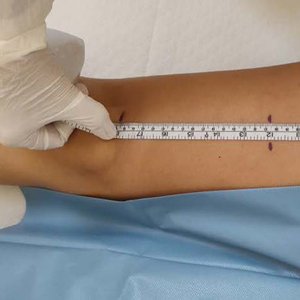 Smart Citations
Smart CitationsSee how this article has been cited at scite.ai
scite shows how a scientific paper has been cited by providing the context of the citation, a classification describing whether it supports, mentions, or contrasts the cited claim, and a label indicating in which section the citation was made.
Validity of ultrasound rectus femoris quantitative assessment: A comparative study between linear and curved array transducers
Appendicular skeletal mass is commonly used to assess the loss in muscle mass and US represents a valid, and reliable method. However, the procedural protocols are still heterogeneous. The aim of this study was to compare the intertransducers validity of thickness, width, and CSA measurements of RF muscle. The AP, LL and CSA of RF muscle were evaluated with both linear and curve probes in ten healthy subjects and six sarcopenic patients. In the healthy group the mean AP diameters measured with the linear array were significantly higher than those measured with the curved array. AP and CSA were higher in the healthy group compared with the sarcopenic group with both transducers. There was a positive correlation between weight and LL diameter, and a negative correlation between age and muscle AP, measured with the linear probe. Both linear and curved probes represent valid methods in US evaluation of the CSA of the RF muscle. However, in the healthy subjects, the thickness and width of the of the same muscle, are affected by the type of probe.
Downloads
Citations
10.35366/115225
How to Cite

This work is licensed under a Creative Commons Attribution-NonCommercial 4.0 International License.
PAGEPress has chosen to apply the Creative Commons Attribution NonCommercial 4.0 International License (CC BY-NC 4.0) to all manuscripts to be published.

 https://doi.org/10.4081/ejtm.2022.11040
https://doi.org/10.4081/ejtm.2022.11040




